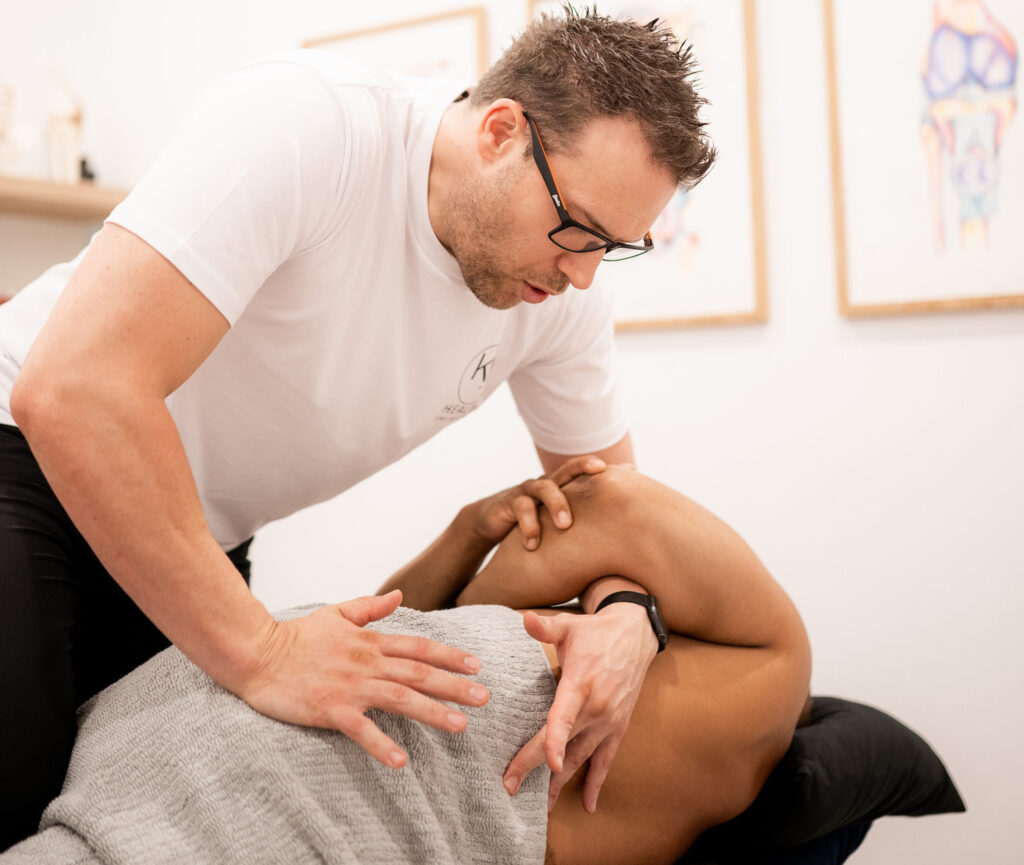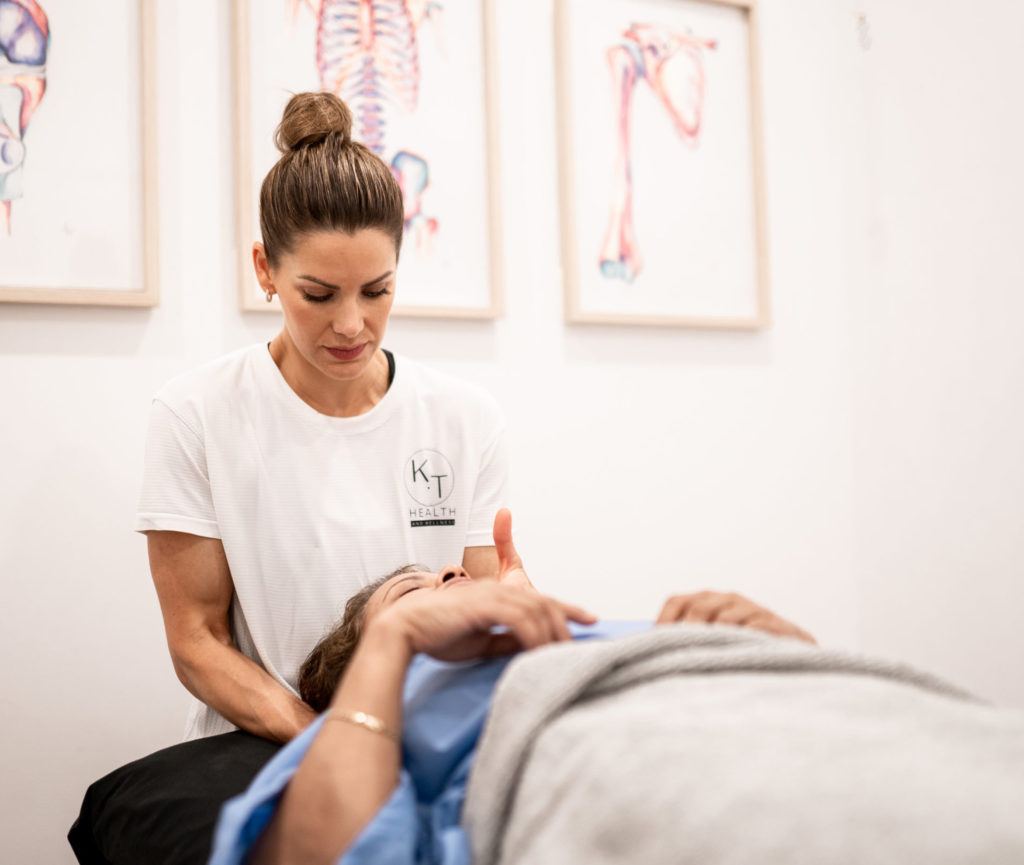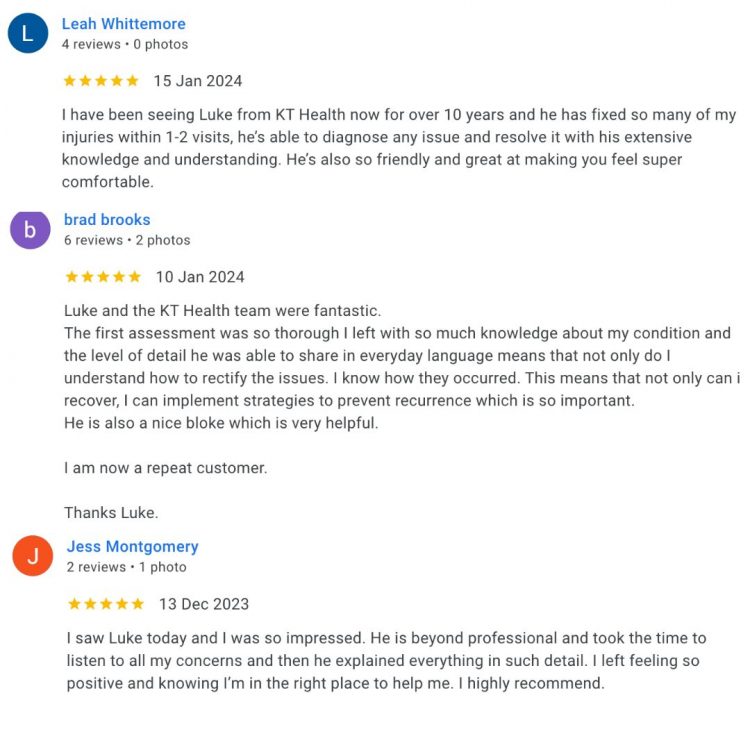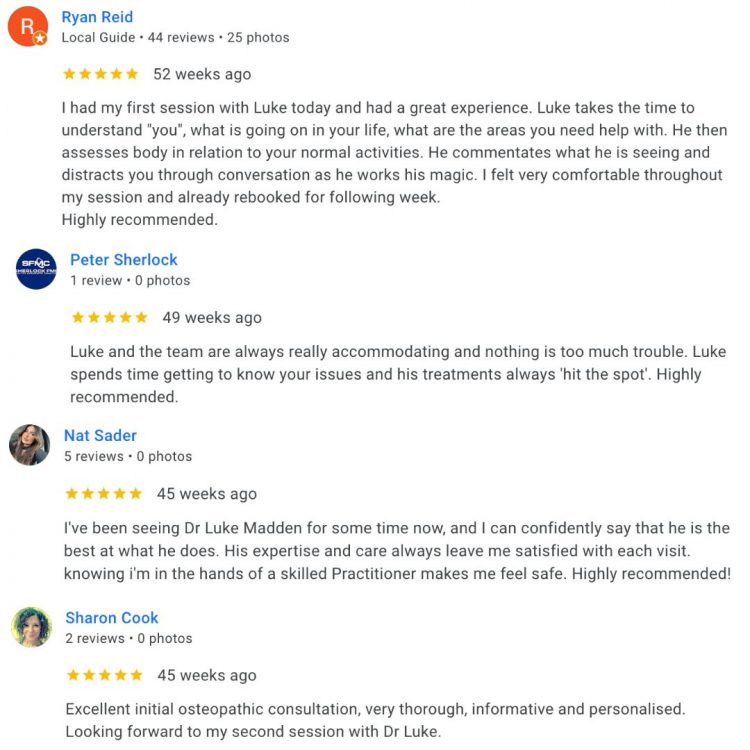Everything You Need to Know About a Medial Meniscus Tear
What is a Medial Meniscus Tear?
A medial meniscus tear is an injury to the cartilage on the inner side of your knee. The meniscus is a C-shaped piece of cartilage that acts like a cushion between your thigh bone (femur) and your shin bone (tibia). It helps with shock absorption, stability, and smooth movement of the knee joint. A tear can happen from twisting, sudden direction changes, or gradual wear and tear over time.
An analogy…
Think of the meniscus like a car’s shock absorber. If it gets worn out or damaged, the ride becomes bumpy and unstable. Similarly, when the medial meniscus is torn, your knee becomes painful, stiff, and unstable during movement.
What are other names that a medial meniscus tear can be called?
- Inner Meniscus Tear
- Medial Cartilage Tear
- Knee Cartilage Tear
- Medial Meniscal Injury
- Torn Medial Meniscus
- Bucket Handle Tear of the Medial Meniscus
What causes a medial meniscus tear?
A medial meniscus tear can be caused by:
- Twisting or pivoting movements while the foot is planted
- Deep squatting or heavy lifting
- Sudden stops or changes in direction (e.g. sports like soccer, basketball, or football)
- Aging and degeneration of the cartilage over time
- Direct impact to the knee (e.g. tackles or falls)
What are the signs and symptoms of a medial meniscus tear?
- Sharp pain on the inside of the knee
- Swelling and stiffness around the joint
- Locking or catching when bending or straightening the knee
- Feeling of instability or giving way
- Difficulty fully straightening the leg
- Tenderness along the inner joint line
What tests are used to diagnose a medial meniscus tear?
- McMurray’s Test: the knee is bent, rotated, and straightened to check for a click or pain
- Apley’s Compression Test: the knee is compressed and rotated to detect pain
- Thessaly Test: standing on one leg while rotating to identify discomfort
- MRI Scan: confirms the location and severity of the tear
- X-ray: used to rule out fractures or arthritis
How long does a medial meniscus tear take to heal?
Recovery time depends on the type and severity of the tear:
- Small tears on the outer edge (where there is more blood supply) can heal in 4–6 weeks
- Larger or inner tears may take 8–12 weeks or longer
- If surgery is required (e.g. meniscus repair or trimming), recovery may take 3–6 months
How does a medial meniscus tear happen?
A medial meniscus tear usually happens when the knee is twisted forcefully while bearing weight. This often occurs in:
- Sports involving cutting or pivoting, like basketball, soccer, or tennis
- Deep squats or lunges under load
- Sudden stops or directional changes
- Traumatic impacts to the side of the knee
- Wear and tear over time, particularly in older adults
What treatment can help a medial meniscus tear?
- R.I.C.E. (Rest, Ice, Compression, Elevation) during the first 48–72 hours
- Osteopathy to restore strength, mobility, and knee stability
- Manual therapy: gentle mobilisation and soft tissue work
- Strengthening exercises for the quads, hamstrings, and glutes
- Anti-inflammatory medications to reduce swelling
- Activity modification: avoiding deep squats, twisting, or running
- Knee brace for support if instability is present
- Surgery (if needed): options include:
- Meniscus repair: stitches to heal the tear (longer recovery)
Partial meniscectomy: removal of the damaged part (quicker recovery)
What exercises or stretches can I do for a medial meniscus tear?
(Always guided by an osteopath and progressed gradually.)
- Quad sets and straight leg raises to strengthen the thigh
- Heel slides to restore knee bending
- Bridges to activate glutes and hamstrings
- Mini squats and step-ups (when pain allows)
- Hamstring curls and calf raises
- Balance drills to improve knee stability
- Gentle stretching for hamstrings and calves
What products can help with a MCL tear?
STOP GUESSING – START MOVING
See what other people have said about our osteopaths
Trustindex verifies that the original source of the review is Google. KT health has really helped my back and i have been able to get back into competitive sportTrustindex verifies that the original source of the review is Google. Absolutely amazing, I see Louie Nouh who always listens and caters to my needs. He is amazing at his job and always helps alleviate my pain. I highly recommend Louie.Trustindex verifies that the original source of the review is Google. Friendly, supportive staff. Such a lovely place to exercise! Highly recommend.Trustindex verifies that the original source of the review is Google. Amazing instructor, I am new to Pilates felt very comfortable & supported.Trustindex verifies that the original source of the review is Google. I have been suffering from shoulder and neck pain for months - I saw Dr Louie Nouh a couple of time. His treatment really relived the pain. I have full range of movement now. His knowledge on exercise is fantastic.Trustindex verifies that the original source of the review is Google. Absolutely love reformer at menai. Instructors are amazing. Love Michaela and love the small classes. Highly recommend!Trustindex verifies that the original source of the review is Google. The trainers are all amazing , they explain everthing step by step and help where needed . It is an amazing place to relax get to know other people have a laugh . I recommend for anyone .Trustindex verifies that the original source of the review is Google. Ever since I came here I’ve been looked after by Louie and my shoulder is already feeling much better. Highly Recommend these are good people.Trustindex verifies that the original source of the review is Google. SENSATIONAL Chiropractor in Menai! I attended my first appointment with Dr Louis Nouh at KT Health & Wellness who is an absolute genius even after one session with him. He explained everything he intended to address about my lower back condition, all in easy to understand, layman’s terms. He said he would call me the next day to follow and see how I was feeling after our session and guess what, he did! During our session, he made me feel relaxed and comfortable especially as it was my first chiropractic appointment EVER! For some reason, I am actually looking forward to my subsequent sessions with him next week. Don’t get me wrong, he did poke, prod and crack me as necessary but the results made it seem worth it.Trustindex verifies that the original source of the review is Google. I have been seeing Melinda now for a couple of months to help with bursitis in my hip. She is one of the best practitioners I’ve ever seen.. With the use of various tools and techniques she has helped me recover much quicker than I expected. Thanks Mel and see you tomorrow!
We don't offer magic fixes or cures, but a sustainable approach to back pain.
Our Osteopaths will offer you a road map to help you take control of your back pain and feel great again.
BOOK YOUR OSTEOPATH VISIT TODAY
Book a Time with Dr Luke Madden Below
Book a Time with Dr Melinda Madden Below
Already have an account?
Book as a guest
- Book an Appointment
A hip flexor strain happens when one of the muscles at the front of your hip, mainly the iliopsoas or rectus femoris, gets overstretched or torn. It’s a common injury in sports that involve kicking, sprinting, or sudden movements, causing pain at the front of the hip or groin.
An analogy…
Think of the hip flexor muscles like strong elastic bands that lift your knee toward your chest. If they are stretched too quickly or too far, they can tear like a snapping rubber band.
What are other names that a hip flexor strain can be called?
Hip Flexor Injury, Iliopsoas Strain, Psoas Strain, Hip Flexor Tear, Strained Iliopsoas Muscle, Torn Iliopsoas Muscle, Pulled Hip Flexor
What causes a hip flexor strain?
The hip flexors are a group of muscles that help you lift your thigh toward your body. A strain happens when the muscle fibres are overloaded, usually from a sudden burst of force or a rapid stretch beyond their limit. This causes small (or large) tears in the muscle or its tendon near the pelvis.
What are the signs and symptoms of a hip flexor strain?
- Sharp pain at the front of the hip or groin area
- Tenderness when pressing the hip flexor muscles
- Pain with lifting the knee, sprinting, kicking, or climbing stairs
- Stiffness or weakness in the hip, especially when bending forward
- Swelling or bruising in the front of the hip
- Pain when stretching the hip backward
What tests are used to diagnose a hip flexor strain?
Palpation: Feeling for tenderness in the front of the hip
Resisted hip flexion test: Pain when lifting the knee against resistance
Stretching tests: Extending the hip backward reproduces symptoms
How long does a hip flexor strain take to heal?
Grade 1 (mild) strains often heal in 1 to 2 weeks. Grade 2 (moderate) strains usually take 3 to 6 weeks. Grade 3 (severe) strains (significant tearing) can take 8 to 12 weeks or more to fully recover.
How does a hip flexor strain happen?
- Sudden sprinting or kicking movements
- Explosive acceleration or direction changes
- Tight hip flexor muscles
- Poor warm-up or muscle preparation
- Weak glutes and core, causing the hip flexors to overwork
- Fatigue or previous hip injuries increasing the risk
What treatment can help a hip flexor strain?
- Relative rest from aggravating activities early on
- Ice application for the first 48–72 hours to control swelling
- Manual therapy (massage, dry needling, and stretching)
- Progressive strengthening and controlled stretching of the hip flexors
- Postural retraining and core strengthening
- Gradual return to running, kicking, and sport-specific drills
What exercises or stretches can I do for a hip flexor strain?
- Isometric hip flexor holds
- Glute and core strengthening exercises
- Gentle hip flexor stretches
- Straight leg raises to rebuild control
What products can help with a hip flexor strain?
What is a MCL TearA hip flexor strain happens when one of the muscles at the front of your hip, mainly the iliopsoas or rectus femoris, gets overstretched or torn. It’s a common injury in sports that involve kicking, sprinting, or sudden movements, causing pain at the front of the hip or groin.
An analogy…
Think of the hip flexor muscles like strong elastic bands that lift your knee toward your chest. If they are stretched too quickly or too far, they can tear like a snapping rubber band.
What are other names that a hip flexor strain can be called?
Hip Flexor Injury, Iliopsoas Strain, Psoas Strain, Hip Flexor Tear, Strained Iliopsoas Muscle, Torn Iliopsoas Muscle, Pulled Hip Flexor
What causes a hip flexor strain?
The hip flexors are a group of muscles that help you lift your thigh toward your body. A strain happens when the muscle fibres are overloaded, usually from a sudden burst of force or a rapid stretch beyond their limit. This causes small (or large) tears in the muscle or its tendon near the pelvis.
What are the signs and symptoms of a hip flexor strain?
- Sharp pain at the front of the hip or groin area
- Tenderness when pressing the hip flexor muscles
- Pain with lifting the knee, sprinting, kicking, or climbing stairs
- Stiffness or weakness in the hip, especially when bending forward
- Swelling or bruising in the front of the hip
- Pain when stretching the hip backward
What tests are used to diagnose a hip flexor strain?
Palpation: Feeling for tenderness in the front of the hip
Resisted hip flexion test: Pain when lifting the knee against resistance
Stretching tests: Extending the hip backward reproduces symptoms
How long does a hip flexor strain take to heal?
Grade 1 (mild) strains often heal in 1 to 2 weeks. Grade 2 (moderate) strains usually take 3 to 6 weeks. Grade 3 (severe) strains (significant tearing) can take 8 to 12 weeks or more to fully recover.
How does a hip flexor strain happen?
- Sudden sprinting or kicking movements
- Explosive acceleration or direction changes
- Tight hip flexor muscles
- Poor warm-up or muscle preparation
- Weak glutes and core, causing the hip flexors to overwork
- Fatigue or previous hip injuries increasing the risk
What treatment can help a hip flexor strain?
- Relative rest from aggravating activities early on
- Ice application for the first 48–72 hours to control swelling
- Manual therapy (massage, dry needling, and stretching)
- Progressive strengthening and controlled stretching of the hip flexors
- Postural retraining and core strengthening
- Gradual return to running, kicking, and sport-specific drills
What exercises or stretches can I do for a hip flexor strain?
- Isometric hip flexor holds
- Glute and core strengthening exercises
- Gentle hip flexor stretches
- Straight leg raises to rebuild control
What products can help with a hip flexor strain?






